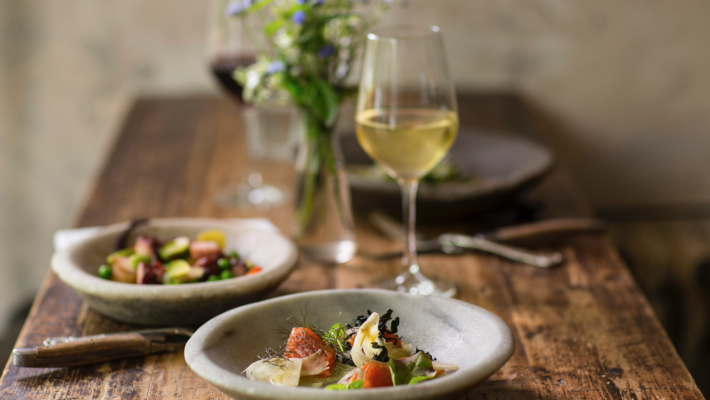Quando si prepara una cena per amici e parenti oltre alla scelta del menù sorge un altro dubbio amletico: quanti vini portare a tavola?
La decisione di quanti (e quali) vini portare in tavola durante un pranzo o una cena dipende da una serie di fattori quali il tipo di situazione (se formale o informale) e la varietà dei cibi proposti.
Si può scegliere di portare a tavolo un unico vino. In questo caso, il vino, dovrà essere abbinato alla portata principale, la quale sarà la padrona indiscussa della cena o del pranzo. Se, invece, il pasto è semplice dall’inizio alla fine e non prevede nessuna “grande portata”, si potrà scegliere un vino altrettanto semplice e non impegnativo a tutto pasto.
Se siete tra amici, quindi più di due commensali, ma il pasto è comunque ancora informale, potete scegliere di portare a tavola due vini, un bianco e un rosso.
Se volete fare colpo sui vostri invitati oppure l’occasione richiede un certo grado di formalità, potete portare a tavola dai tre ai cinque vini. Si parte con un aperitivo, magari un metodo classico (le bollicine piacciono sempre a inizio pasto!), poi un vino bianco leggero per l’antipasto e il primo, passando poi per un rosso (tipologia variabile a seconda del piatto) per il secondo di carne e formaggio stagionati, finendo con un vino dolce per il dessert.
L’ideale sarebbe un calice per ogni vino assaggiato. Vietato mescolare il vino nello stesso bicchiere!
Tra una portata e l’altra (sia di cibo sia di vino), invece, è bene bere dell’acqua per “ripulire” il palato dal sapore precedente e prepararlo per quello successivo.
Se il vostro timore è quello di esagerare bevendo troppi vini diversi nello stesso momento, leggete qui! Ho qualche mito da sfatare.
—
English Version.
When preparing a dinner for friends and relatives, in addition to the choice of the menu, there is another Hamlet doubt: how many wines do you bring to the table?
The decision of how many (and which) wines to bring to the table during a lunch or dinner depends on a series of factors such as the type of situation (whether formal or informal) and the variety of foods proposed.
You can choose to bring a single wine to the table. In this case, the wine must be combined with the main course, which will be the undisputed master of dinner or lunch. If, on the other hand, the meal is simple from start to finish and does not include any “large course”, you can choose an equally simple and non-binding wine throughout the meal.
If you are among friends, then more than two guests, but the meal is still informal, you can choose to bring to the table two wines, one white and one red.
If you want to impress your guests or the occasion requires a certain degree of formality, you can bring to the table from three to five wines. It starts with an aperitif, maybe a classic method (the bubbles always like at the beginning of the meal!), Then a light white wine for the starter and the first, then passing by a red (variable type depending on the plate) for the second aged meat and cheese, finishing with a dessert wine.
The ideal would be a glass for every wine tasted. Do not mix the wine in the same glass!
Between one course and another (both food and wine), however, it is good to drink some water to “clean up” the palate from the previous flavor and prepare it for the next one.
If your fear is to overdo drinking too many different wines at the same time, read here! I have some myths to dispel.



what do you think?